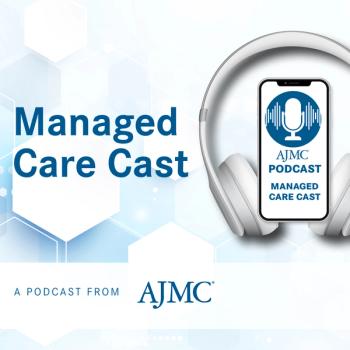
TAVR May Induce Early LVEF Improvement in Heart Failure
This study investigated long-term mortality outcomes following transcatheter aortic valve replacement (TAVR) among patients with a left ventricular ejection fraction (LVEF) below 50% and comorbid severe aortic stenosis.
Despite having severe aortic stenosis and a left ventricular
Five-year all-cause and cardiac-related mortality rates also improved among these patients, the study authors noted who used data from the Placement of Aortic Transcatheter Valves (PARTNER) 1, 2, and S3 trials and registries for intermediate- and high-risk patients with baseline LVEF below 50%. For the study, early LVEF improvement was defined as at least a 10 percentage point increase from baseline LVEF within 30 days of TAVR.
“Prior studies examining the association between LVEF improvement and outcomes are limited by small sample size, inclusion of extreme- or high-risk patients only, inclusion of transapical TAVR, and short-term (1-year) follow-up,” the authors wrote. “Thus, the primary objective of this study was to examine the association between early LVEF improvement and 5-year clinical outcomes after transfemoral TAVR.”
Among the patients who were enrolled in the PARTNER trials and registries between July 2007 and April 2015, 32.8% had a mean (SD) LVEF improvement of 16.4% (5.7%) within 30 days of transfemoral TAVR (early improvement). There were 659 older patients (mean age, 82.4 [7.7] years) in the entire cohort, 71.0% were male, and 89.7% were White. The primary end point was 5-year all-cause death and secondary end points were New York Heart Association (NYHA) functional class, cardiac death, noncardiac death, rehospitalization, all-cause death or rehospitalization, cardiac death or rehospitalization, and Kansas City Cardiomyopathy Questionnaire (KCCQ) overall summary score at 5 years
Historical conditions associated with reduced LVEF improvement were myocardial infarction (MI; odds ratio [OR], 0.64; 95% CI, 0.40-1.04; P = .07), diabetes (OR, 0.55; 95% CI, 0.34-0.86; P = .01), cancer (OR, 0.50; 95% CI, 0.32-0.80; P = .003), higher baseline LVEF (OR, 0.93; 95% CI 0.90-0.96; P < .001), larger left ventricular end-diastolic diameter (OR, 0.61; 95% CI, 0.43-0.87; P = .006), and larger aortic valve area (OR, 0.16; 95% CI, 0.03-0.78; P = .02).
In an analysis the investigators performed between patients who did not see early LVEF improvement compared with those who did, lower rates of 5-year all-cause and cardiac-related death were seen among the latter:
- All-cause mortality:
- Had early LVEF improvement: 50% (95% CI, 43.3%-57.1%)
- Lacked early LVEF improvement: 58.4% (95% CI, 53.6%-63.2%; P = .04)
- Cardiac-related mortality:
- Had early LVEF improvement: 29.5% (95% CI, 23.2%-37.1%)
- Lacked early LVEF improvement: 38.1% (95% CI, 33.1%-43.6%; P = .05)
Trends of reduced mortality rates following early LVEF improvement for 5-year all-cause death and cardiac death were also seen following multivariable analyses that considered risk per 5% increase in LVEF. The risk of all-cause death dropped 6% (adjusted HR [aHR], 0.94; 95% CI, 0.88-1.00; P = .04); the risk of cardiac death, 10% (aHR, 0.90; 95% CI, 0.82-0.98; P = .02); noncardiac death, 3% (aHR, 0.97; 95% CI, 0.87-1.07; P = .51); rehospitalization, 2% (aHR, 0.98; 95% CI, 0.92-1.06); death or rehospitalization, 3% (aHR, 0.97; 95% CI, 0.92-1.03); and cardiac death or rehospitalization, 1% (aHR, 0.99; 95% CI, 0.93-1.05). Corresponding reduced risks per LVEF increase of at least 10 percentage points were 21%, 25%, 18%, 7%, 12%, and 3%.
Results on all-cause death or rehospitalization, NYHA functional class, and KCCQ overall summary score did not differ significantly between the early LVEF improvement and no early improvement groups, respectively:
- All-cause death or rehospitalization: 63.5% vs 70.3% (P = .18)
- Cardiac death or rehospitalization: 56.7% vs 59.7% (P = .62)
- NYHA functional class: 7.9% vs 13.4% (P = .26)
- KCCQ score: 75.6 (19.6) vs 73.9 (21.8) (P = .58)
“The independent predictors of early LVEF improvement identified in this study may help counsel patients about the expected benefits of TAVR in terms of LVEF recovery and to individualize treatment decisions,” the authors determined. “Future studies are needed to determine if earlier intervention (eg, TAVR for moderate AS) with or without additional imaging (eg, cardiac MRI) is warranted in this patient population to improve the likelihood of LVEF recovery and clinical outcomes post TAVR.”
In particular, the authors suggest studies investigate potential pathophysiological mechanisms involved in early LVEF recovery beyond just those related to heart failure, because of the lack of noticeable difference in rehospitalization, NYHA functional class, or KCCQ overall summary score seen between those with and without early recovery.
Reference
Kolte D, Bhardwaj B, Lu M, et al. Association between early left ventricular ejection fraction improvement after transcatheter aortic valve replacement and 5-year clinical outcomes. JAMA Cardiol. Published online July 27, 2022. doi:10.1001/jamacardio.2022.2222
Newsletter
Stay ahead of policy, cost, and value—subscribe to AJMC for expert insights at the intersection of clinical care and health economics.















































